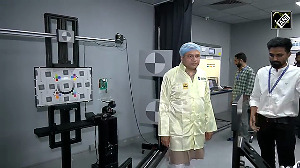We've reached the final month and a half of CAT preparation. Yesterday, we began our investigation of the Quantitative and Data Interpretation sections. Today, let's continue looking at these two sections.
Here are six sets of tips aimed to help you at this stage of CAT preparation:
Method(s) of solving questions
You can use any of the four methods to answer the question in Quant or DI section.
Selection of Questions
While selecting the questions to attempt we have to be very careful. One must remember that in exams other than CAT we have to do complete as many number of questions as we can. On the other hand, in CAT a possible scenario may be the one where the test taker leaves nearly half the questions and still makes it to the top. The ability to select questions with easy statements and not-so-close answer choices can be developed by analyzsng your MOCK CATs regularly at this stage.
Improving speed of calculation
The time spent by a student in Quant and DI section on calculation is about 20% and the rest 80% is spent on comprehending the concept of the question. So beside your basic concepts you should have to work more on your calculations. It is recommended to spend at least 15 minutes daily on doing addition, subtraction, multiplication, and division. Also ability to recall tables, squares & cubes up to 30, and multiplication between some common numbers like 13 x 12, 18 x 24 etc will be handy in getting the best out of the 20% time one spends on calculations.
Accuracy
Since, the time doesn't permit us to solve all the questions. It becomes important to make sure that one solves 50% of questions at an accuracy rate not less than 80% rather than doing 80% of questions with 50% accuracy rate. If the paper is trickier, then an attempt and accuracy can be adjusted to find the optimum balance.
Handling traps in the language of the question
A well prepared student can fall in the traps in a few questions in CAT. You have to clearly see what is being asked in the question. For example, consider the following question:
Question: A student is expecting of getting 90 marks in the math paper and overall 75% marks in five papers but he actually gets only 80. What percentage of the marks he finally gets if the marks in other four papers are same as expected?
Solution: Well the very first answer from majority number of students will be 73% as they themselves imagine the maximum marks of a paper as 100, which is a trap in the question. This happens because in many examinations maximum marks are 100, but this does not hold true in this situation.
So the answer for these questions will be data insufficient or can't be determined.
Preparing for a changed CAT-Quant pattern
Be prepared with every type of permutation and combination for the pattern of CAT 2007. Will it have 5 or 4 options per questions; is it going to be .25 negative or .333 negative for a wrong answer; will the number of question decrease or increase; will the sections have sub-sections and further sub-sub-sections with varying marks per question or not; which topics would be visible more in the CAT 2007; what adjustments should be made in the attempt pattern if there are more questions from an unexpectedly less preferred topic like functions, time and work etc. All these uncertainties should be addressed and discussed with your trainers at this stage only in order to be prepared for the same.
Hence, in order to reach the 99.99 mark it becomes imperative to have familiarity with different ways of managing the attempt and finding the answers to the optimum number of questions. Keeping many sources of questions handy with you (like previous CATs and hundreds of tests and new questions available on https://www.tcyonline.com/) and their continuous analysis are indispensable for CAT preparation at this stage.
All the best.
Part I: The perfect blend of speed and accuracy
Priya Varat Singh and Dacharla Vamsi are Quantitative Reasoning experts with TCY and can be contacted at tcychd@tcyonline.com. Visit https://www.tcyonline.com/ to more about CAT and winning strategies.
To gain further from the quantitative and verbal reasoning strategies developed by TCY experts for CAT 2007, visit www.tcyonline.com to attend a Web-Seminar in an online classroom atmosphere.







 © 2025
© 2025